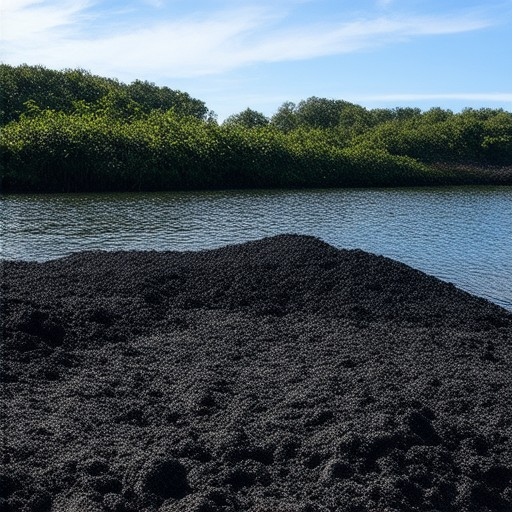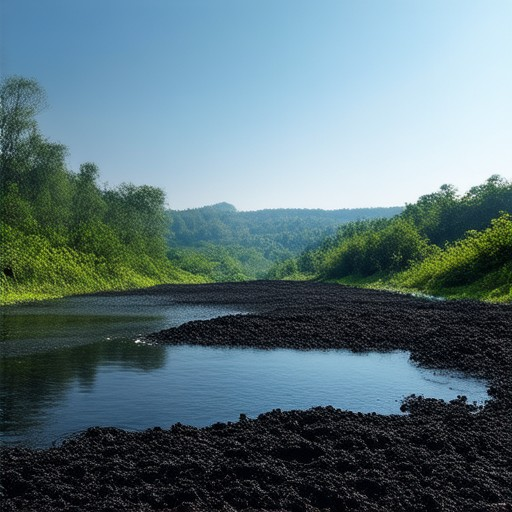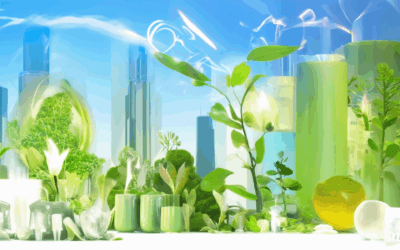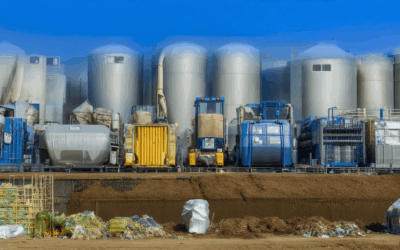Biochar has emerged as a fascinating natural solution for enhancing soil health and water retention, sparking curiosity among gardeners, farmers, and environmental enthusiasts alike. While widely recognized for its benefits in improving soil fertility, the role of biochar in water retention remains a subject of intrigue and debate. In this comprehensive exploration, we delve into the mechanisms behind biochar’s ability to influence water retention, its broader implications for soil health, and how it might revolutionize agricultural practices. By examining both the advantages and potential pitfalls, this article aims to provide a clear understanding of whether biochar is a viable tool for improving water retention in various contexts. From its impact on soil organic matter to its residual effects, we uncover the multifaceted relationship between biochar and water retention, offering insights that could transform how we approach sustainable land management.

Is Biochar Good for Water Retention?
Yes, biochar can contribute positively to water retention in soil. Its porous structure acts as a sponge, holding onto water molecules and improving soil moisture levels. This can help reduce runoff and maintain soil hydration, particularly during dry periods.
Biochar enhances soil fertility and structure, which may indirectly improve water retention by promoting healthier plant growth and root development. Stronger root systems can better access and retain water in the soil.
Additionally, biochar can increase the soil’s ability to infiltrate and store water, making it more resilient to drought conditions. However, its impact on water retention may vary depending on the specific type of biochar and how it’s integrated into the soil.
Field studies have shown that biochar-treated soils exhibit improved water retention capabilities compared to untreated soils, though further research may be needed to fully understand all variables involved.
Does Biochar Retain Moisture?
Biochar, produced through pyrolysis of organic materials, is known for its unique properties as a soil amendment. While it may not retain moisture on its own due to its hydrophobic nature, it plays a crucial role in enhancing soil health and structure.
- Hydrophobic Nature:** Biochar tends to repel water, meaning it does not absorb moisture easily. This characteristic makes it less effective at retaining water on its own surface.
- Soil Structure Improvement:** By increasing soil porosity and aeration, biochar allows water to infiltrate and move through the soil more efficiently. This improved drainage can contribute to better overall moisture retention in the surrounding soil environment.
- Nutrient Contribution:** Biochar adds essential nutrients to the soil, which can enhance plant root systems. These stronger roots may improve the plant’s ability to uptake and utilize available moisture more effectively.
In summary, biochar itself does not retain moisture due to its hydrophobic properties, but it supports soil conditions that promote better moisture management and plant health.

What Are the Drawbacks of Biochar?
Biochar, a carbon-rich material produced through pyrolysis, has gained popularity as a soil amendment and renewable energy source. However, like any product, it has its drawbacks. Below are some key disadvantages of biochar:
- Reduced Crop Yields: One of the primary concerns is that biochar can sorb water and nutrients from the soil, potentially reducing the availability of these essential elements for plants. This can lead to decreased crop yields, especially in regions with limited rainfall or nutrient-rich soils.
- Pesticide Inefficiency: Biochar has been found to sorb pesticides and herbicides, which can reduce their effectiveness. This is particularly problematic for farmers relying on chemical pest control methods, as it may require increased application rates or alternative strategies to manage pests effectively.
- Heavy Metal Contamination: Some biochars derived from contaminated feedstocks, such as coal or municipal waste, can contain harmful levels of heavy metals like arsenic, chromium, and mercury. Consuming or using such biochars can pose health risks, especially in agriculture where they come into contact with food crops.
While biochar offers numerous benefits, these drawbacks highlight the importance of sourcing high-quality biochar from reputable producers. At Pyrolysium, we prioritize the use of clean, sustainable feedstocks to minimize contaminants and maximize the positive impact of our products on the environment and agriculture.

Effect of Biochar on Water Holding Capacity
Biochar significantly enhances the water-holding capacity of soil through several mechanisms:
- Porous Structure : Biochar’s highly porous structure creates ample void spaces that trap air, allowing water molecules to saturate these spaces more effectively. This increased porosity improves water infiltration and retention.
- Hydrophobic Properties : While biochar exhibits hydrophobic behavior, it doesn’t repel water entirely. Instead, it acts like a sponge, absorbing some water and releasing it slowly, thereby reducing runoff and enhancing water availability for plants.
- Soil Aggregation : Biochar promotes soil aggregation by encouraging interactions between soil particles. This aggregation creates a mix of microaggregates (which hold water) and macroaggregates (which facilitate root penetration), optimizing water retention without impeding root growth.
- Carbon Addition : As a rich source of carbon, biochar serves as a food source for soil microbes. Their activity can further modify biochar’s structure and functionality, potentially increasing its water-holding capacity over time.
- Surface Tension Reduction : Biochar reduces the surface tension of water, allowing water droplets to spread more evenly and infiltrate deeper into the soil, thus increasing water availability.
- Reduced Runoff : By holding water more efficiently, biochar minimizes surface runoff, ensuring that more water stays available for plants during dry periods.
These combined effects make biochar a valuable tool for improving soil health and water retention, supporting sustainable agriculture and ecosystem resilience.
What is the Residual Effect of Biochar?
Biochar, a carbon-rich material derived from organic waste through pyrolysis, has several residual effects that benefit both soil and plant health. These effects occur even after the initial application of biochar, contributing to long-term improvements in agricultural productivity and environmental sustainability.
- Improved Nutrient Cycling: Biochar enhances nutrient availability in the soil, particularly for essential nutrients like phosphorus, potassium, and magnesium. This leads to better nutrient uptake by plants, promoting healthy growth and yield.
- Increased Microbial Activity: Biochar serves as a habitat for beneficial microorganisms, which boost soil fertility and decomposition processes. This activity continues to enrich the soil over time.
- Enhanced Water Retention: Biochar improves soil structure, increasing its ability to hold water and reduce runoff. This is particularly beneficial during dry conditions, as it helps maintain soil moisture for plant growth.
- Reduced Greenhouse Gas Emissions: By sequestering carbon, biochar helps mitigate climate change. The residual carbon in biochar continues to store carbon in the soil, contributing to carbon sequestration efforts.
- Strengthened Plant Resistance: Biochar enhances plant resilience by improving root development and nutrient availability. This makes plants more adaptable to stressors like drought, pests, and diseases.
Benefits to Soil and Environment
The residual effects of biochar extend beyond immediate agricultural benefits. By improving soil health and structure, biochar promotes biodiversity and supports a thriving ecosystem. Its ability to capture and store carbon makes it a valuable tool in combating global warming and promoting sustainable land management practices.
For more information on biochar’s benefits and applications, explore our resources on biochar advantages and how it can transform your farming or gardening practices.
Discover high-quality biochar products designed to maximize soil potential at Carbon Gold and TerraCORE . These trusted brands offer biochar solutions tailored for various agricultural needs, ensuring optimal results for your soil and crops.

Does Soil Organic Matter Increase Water Holding Capacity?
Yes, soil organic matter significantly increases the water-holding capacity of soil. Organic matter, derived from decomposed plant and animal material, enhances soil structure and water retention mechanisms.
Key Mechanisms:
- Water Adsorption:** Organic molecules, particularly humus, have a high surface area and can adsorb and store water effectively.
- Soil Aggregation:** Organic matter facilitates soil particle aggregation, creating larger pores that allow deeper water infiltration and reducing runoff.
- Nutrient Release:** Decomposing organic matter releases essential nutrients like nitrogen and phosphorus, promoting plant growth and indirectly boosting water retention capabilities.
Research Evidence:
A 1994 study by Hudson demonstrated that a silt loam soil with 4% organic matter holds more than twice the water of a similar soil with only 1% organic matter. This highlights the direct correlation between organic matter levels and water-holding capacity.
Practical Implications:
- Adding organic matter through composting or other practices can enhance soil health and water retention.
- Improved water infiltration reduces erosion and replenishes groundwater supplies.
- Organic-rich soils are more resilient to drought conditions, supporting sustainable agriculture and land management.
Conclusion:
Increasing soil organic matter is an effective strategy to boost water-holding capacity, benefiting both soil health and agricultural productivity. By understanding and managing organic matter, farmers and land managers can contribute to more efficient water use and sustainable ecosystems.




0 Comments